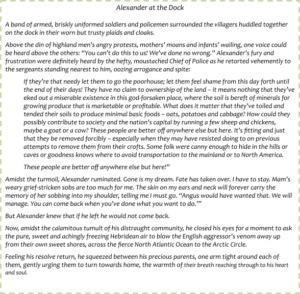
The clans
The Macmillan clan can be traced back to the 14th century. On the west coast of Scotland at Kilmory Knap in Argyll there is a stone cross in the grounds of the chapel which bears testimony to the presence of the Macmillan clan at that time. In addition to carvings of the Virgin Mary and St John the apostle, the stone bears an inscription in Gaelic which translates as: This is the Cross of Alexander Macmillan. For many centuries the nature and structure …

The Clearances: Displacement of Hebrideans Through Enforced Emigration
Shame, indeed, was what the puppets of an authoritarian master intended to incur on the crofters of Balivanich when our great grandfather’s family was living there. His immediate family somehow managed to escape such a fate – exactly how is unknown at this stage; however, it’s possible they were among the people who fled to the hills to escape enforcement of an English Government Act …

The Parish of Govan
In the British context, a parish is defined as a political subdivision, usually corresponding in boundaries to an original ecclesiastical parish. By identifying an administrative district with the term parish, religion and government are intrinsically linked. Just how this link played out and impacted on the population of Govan provides a backstory for what life was like in Govan for our ancestors when they lived there. The parish of Govan is in the City of Glasgow, and is situated …

Issues of Identity Arising from the Clearances and the Industrial Revolution
The impact of compulsory emigration
Challenges of ethnicity for the Indigenous people of the Hebrides related to loss of identity at every level. By enforcing compulsory emigration on generations of Scottish islanders, the British government brutally and ignominiously stripped them of their Hebridean identities. Like the Indigenous peoples all over the globe, tens of thousands of Scots became unwilling…

To the best of our knowledge, our parents were the first close descendants of our paternal and maternal forebears to come to Australia. They arrived in Melbourne on 5 June 1948 to take up a completely new life for themselves and their two little girls. For the first time in their five years of married life our parents were able to live independently, and within a few years they were welcoming brothers, sisters, nieces and nephews to their new homeland. Before very much longer our eighty-odd-year-old grandmother, accompanied by her stepson Alec, astonished everyone by packing up her most treasured belongings, boarding a jet, and arriving…
